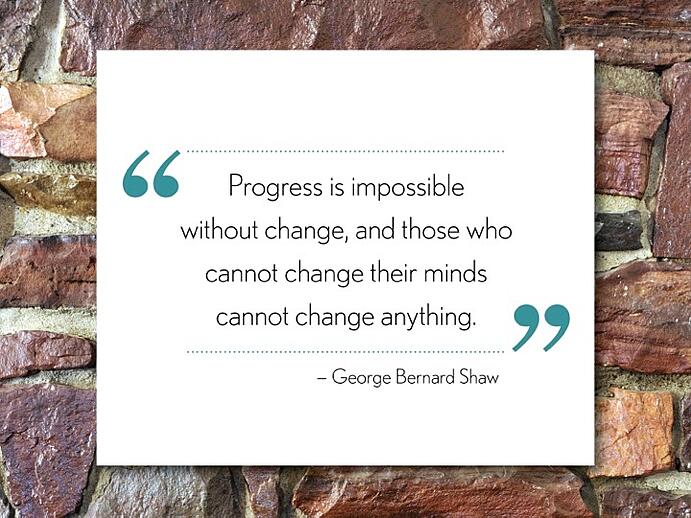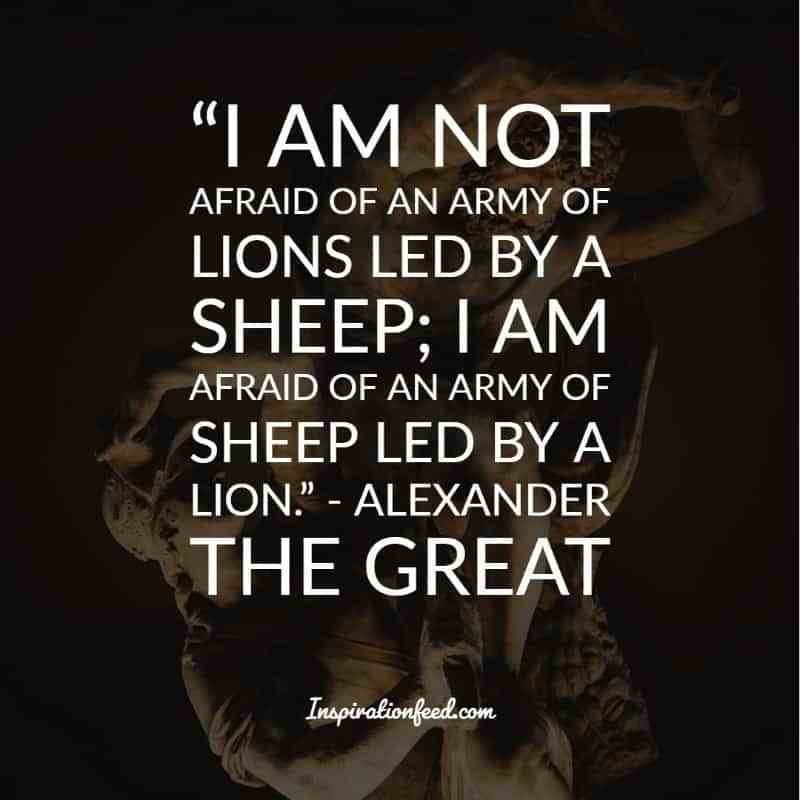ARTICLE: Our Electric Personalities
- by Suzanne Bourner
- •
- 04 Mar, 2019
- •
How Cyberspace Challenges Theories on Identity

Today we find ourselves less bound to the physical presence of our colleagues and social interactions, as the internet has, and continues to change the way we work, learn, shop and socialise. This essay considers how the internet assists in sharing otherwise hidden elements of an individual’s identity and enables stigmatised individuals to express and even to cultivate a more genuine version of their identities. We begin by considering psychological concepts of self and identity from a traditional perspective, focusing upon the collective self as a backdrop to the development of symbolic interactionism. Various theories of contrasting selves are presented drawing importantly on the concept of a ‘true’ or private self, followed by the distinction between traditional theories which posit stable identity concepts in contrast to social constructionist theories highlighting a more flexible identity. This is followed by discussion around the conventional problems relating to both concealable and non-concealable stigma and primarily the threat which stigma traditionally represents to identity and its formation. These concepts of identity and stigma are then examined in the context of the post-modern and uniquely differentiating environmental aspects of the internet.
Two central questions are asked re the nature of human identity. The first is whether there is a core self which exists over and above social interaction. The second is whether the self operates as a truly individualised concept (Allport, 1924, p. 24) or whether identity and self is based instead on consideration of social perceptions. Wundt and other psychologists such as Durkheim, Muscovici and Tajfel theorised firmly in the direction of the importance of the collective self which emerges alongside social interaction (Farr, 1983). In relation to this, Identity theory has long considered the idea that individuals have various senses of self which exist in reference to society. William James not only opined that a person has as many identities as there are people who know him, but also drew upon two distinct but reciprocal concepts of self: ‘I’ in reference to the subject as seen by the individual, and ‘me’ in reference to the object of others perception (leary & Tangney, 2011) Thus, according to ‘symbolic interactionism’ (Stryker, 1987) the self arises out of social interface (Mead, 1934) and entails Cooleys idea of a looking glass self where forming a sense of self includes seeing ourselves as how we ‘perceive’ that others see us (Tice 1992). Importantly, Rogers and others conceptualised that our current selves also contain elements which are not expressed socially yet still represent important identity defining factors and is what constitutes the ‘true self’. (Bargh, McKenna & Fitzsimons, 2002). Theories relating to a hidden or true self were considered further by Baumeister and Tice (1986) in identification of the discrepancy between the public and private self. These theories paint traditional social psychological assumptions of identity as being as much a product of society as of the individual with many contemplating the essentialist idea of a ‘true’ or private self in addition to an ‘actual’ or public one. Traditional theory therefore explains identity not only as having some hidden or future elements, but also as existing in reference to the world, as asserting itself in the interpersonal relationship, as being unitary and core (Turkle, 2011) and importantly, as being stable throughout life. However, the assumption of stability of identity has been challenged by the arrival of the internet and social constructionist approaches. More recent theory explains identity today as being multiple, variable, flexible and unstable (Gergen, 1985: Cresswell, 2011).
There are many reasons as to why parts of the self may not be expressed, particularly in relation to stigmatization of both concealable and non-concealable differences (Goffman, 1963). The effects upon stigmatized individuals have been noted as damaging and far reaching, with severe effects upon health and mental well-being (Link & Phelan, 2001). Stigma is described by Crocker et al, (1998) as occurring when a person is believed to have “some attribute or characteristic that conveys a social identity that is devaluated in a particular social context”. Accordingly, stigma is therefore considered as a construct which relies upon relationships and social context. It is held that stigmas affect individuals via various mediums including discrimination, self-fulfilling prophecies, automatic stereotype activation behaviour and threat to identity (Major & O’brien, 2005). In focusing on the impact upon identity, it has been seen that where a person feels their group is devalued then this threatens the aspect of the self associated with membership of that devalued group (Tajfel & Turner, 2004). Additionally, where the stigmatizing aspect is invisible such as sexual orientation (rather than visible such as obesity) stigmatised identities are less able to align themselves with similar identities around them removing the ability to satisfy important social and personal identity needs (Fiske, 1993). Thus, the individuals’ need to belong, the need to gain certainty about oneself and the need to gain self-esteem (Brewer, 1991) are potentially not fulfilled in those with concealable stigmas (Frable, 1993). Furthermore, those with concealable stigmatising features are more likely to hear adverse comments, reinforcing the negative effects within that person’s self-esteem. The result is that individuals with concealable versus un-concealable stigmas have felt isolated and unable to share their identity socially, thus creating conflict between the public persona and private (or true) identity (Frable, 1993).
McKenna, Gleeson and Green (2002) highlight four important differences between face to face and internet interaction which pinpoint the uniqueness of the internet environment and its impact in relation to identity and stigmatised individuals. Firstly, anonymity is a possibility on the internet, indeed Identity need not be disclosed. The internet presents the ability for un-concealable stigmas to be concealed and thus for elaboration of parts of the self which may have remained unexplored due to shyness. Similarly, and yet conversely, stigmatized identities who are often forced to conceal a stigma, can feel empowered to reveal their true selves and stigmatising features in online interactions (albeit unconsciously (McKenna, 2006) and to find and join community groups on the internet. Both forms of stigmatised groups therefore are able to use cyberspace to escape the restrictions illustrated by traditional identity and stigma theory and enjoy related life benefits such as increased positive affect and self-esteem. Stigmatised groups therefore become free to construct identities which cast aside characters and ‘selves’ which they had previously maintained for public or face-to-face relationships. (Mckenna & Bargh, 2000).
Secondly, not only those individuals who are stigmatized through disability, but also those who are perceived by society as being less physically attractive may also be able to explore their identity and come closer to their true or private selves on line. Communicating in the absence of physical attributes and cues can allow for stereotype free development of relationships. The Halo effect, where individuals who are attractive are automatically seen as being better liked, helped by others, more intelligent and kinder (Guadagno & Cialdini, 2002) is not observed in on line interactions. People with perceived physical disadvantages (whether it be extreme beauty or disability) therefore are less likely to be discriminated against and are able to express relevant, strategic or positive parts of their selves. Here lies the idea that it is possible for the internet to nurture a person’s true self, at the same time as enabling them to hide portions of it (Ben Ze’ev, 2005).
Thirdly, Internet relationships are capable of being less spontaneous and less confrontational. Stigmatised groups such as those with concealed (or non-concealed) developmental or communication affecting disorders such as autism, or simply low self-esteem may therefore find solace in the ability to choose the time and pace of interactions. This process on line may reduce stress and allow time for an individual to strategically create an identity which is helpful, yet considerably different to the one they have in face to face relationships. The identity of less confident or disabled individuals can therefore thrive on line and become akin to that of an active, positive, confident individual, capable of carrying out practical social activities and in creating helpful social bonds.
Fourthly, the internet also facilitates the ability to easily find others who share important or stigmatised elements of identity. This is of great importance to those with concealable stigmas who may be unable to associate with similar others due to other individuals’ concealment of the same for fear of exposing their own stigmas. Benefits are thus derived from the ability to share formerly hidden parts of identity with similar others and receive all important social validation (McKenna & Bargh, 1998).
These four pivotal distinctions between on line and face to face interactions illustrate an environment where both concealed and unconcealed stigmatised identities are able to carry out development of their true selves (McKenna & Bargh, 2000) placing importance on social interaction in identity development. With visible stigmas this may be through increased concealment opportunities creating the occasion to demonstrate or develop other aspects of the self. Whilst with invisible stigmas, on line communication or communicative identification with a larger group (Reid & Deaux, 1996) reduces isolation and facilitates identity demarginalization and well-being (McKenna & Bargh, 1998). It is important to note however that aside from simply enabling marginalised identities to be recreated or revealed, such changes to identity as created on line, do not simply generate an additional virtual persona or ‘masking effect’ which may then pander to a problematic stigmatised society (Cain, 1991). Rather, it has been seen that such on line interactions which permit the individual to express their identity more genuinely (Turkle, 1999) also induce a spill over effect into ‘real life’. In a 1998 study (Mckenna & Bargh) found that participants with marginalised concealed identities having created a ‘truer’ persona in on line groups, and in adherence with self-completion theory (Golwitzer, Wicklund & Hilton, 1982) returned to real life and continued their new identities. Therefore, alongside placing greater importance on social identity within the persona of the stigmatised individual, the internet also promotes flexibility of persona alongside demarginalization of stigmatised identity, thus challenging both traditional identity and stigma theories.
Whilst it can be said therefore that identity is effectively becoming linked to choice, creation and freedom in challenging the traditional concept of stability of identity across a lifetime, cyberspace can nonetheless have the effect of diminishing the existence of multiple identities. Constructionist theories and the internet allow for the existence of flexible, unstable and multiple selves. However, the internet as we have seen also has the effect of removing the need for public aliases in concealable stigmatised identities and serves rather to proliferate and magnify a large part of a previously hidden identity in marginalised personas. The internet as well as challenging the traditional concept of stable lifelong identities in some groups, also calls into question in other groups the social constructionist theory of post-modern internet identities as being multiple. Whilst we have seen how the internet undoubtedly challenges aspects of traditional identity theory in the possible creation of variable, impermanent and easily produced multiple selves, cyber space may too challenge even post-modernist approaches. Whilst in many non-stigmatised (and stigmatised) groups the internet has provided for a flexible, situational and variable identity - it has nonetheless conversely been seen to have a stabilising and unifying effect on those with concealable stigmas, more consistent with traditional theory.
Perhaps dichotomously therefore, the internet whilst permitting people to easily change and flexibly explore what was thought to be a stable construct (Dretzin, 2009), also allows for closer unification between the actual and true self. This challenges not only aspects of traditional, but also postmodern identity theory in relation to stigmatised groups. However, it is possible that the dynamics at play in the creation of a ‘Protean self’, could also precipitate an eventual inability to reflect on who we are as authentic identities. It is to be seen whether human beings in cyberspace will lose the aptitude to inwardly reflect, perceive and communicate a true persona without the need to connect and interact electronically with multiple, and perhaps anonymous others. In short, the traditional social psychological principle of influence of social context over the construction of identity may well be in decline.
References
Allport, G. W. (1924). The study of the undivided personality. The Journal of Abnormal Psychology and Social Psychology, 19(2), 132.
Bargh, J. A., McKenna, K. Y., & Fitzsimons, G. M. (2002). Can you see the real me? Activation and expression of the “true self” on the Internet. Journal of social issues, 58(1), 33-48.
Baumeister, R. E., & Tice, D. M. (1986). Four selves, two motives, and a substitute process self-regulation model. In Public self and private self (pp. 63-74). Springer, New York, NY.
Ben Se’ev, A. (2005). ‘Detattachment': the unique nature of online romantic relationships
In Amichai–Hamburger, Y. Understanding Human Behavior in Cyberspace. New York: Oxford University Press.
Brewer, M. B. (1991). The social self: On being the same and different at the same time. Personality and social psychology bulletin, 17(5), 475-482.
Cain, R. (1991). Stigma management and gay identity development. Social work, 36(1), 67-73.
Cresswell, J. (2011). Being faithful: Bakhtin and a potential postmodern psychology of self. Culture & Psychology, 17(4), 473-490.
Crocker, J., Major, B., & Steele, C. (1998). Social stigma. In Handbook of Social Psychology, ed. S Fiske, D Gilbert, G Lindzey, vol. 2, pp. 504–53. Boston, MA: McGraw-Hill
Farr, R. M. (1983). Wilhelm Wundt (1832–1920) and the origins of psychology as an experimental and social science. British Journal of Social Psychology, 22(4), 289-301.
Fiske, S. T. (1993). Controlling other people: The impact of power on stereotyping. American psychologist, 48(6), 621.
Frable, D. E. (1993). Dimensions of marginality: Distinctions among those who are different. Personality and Social Psychology Bulletin, 19(4), 370-380.
Gergen, K. J. (1985). The social constructionist movement in modern psychology. American psychologist, 40(3), 266.
Goffman, E. (1963). Stigma: Notes on the management of a spoiled identity. New York: Simon & Schuster
Gollwitzer, P. M., Wicklund, R. A., & Hilton, J. L. (1982). Admission of failure and symbolic self-completion: Extending Lewinian theory. Journal of Personality and Social Psychology, 43(2), 358.
Guadagno, R. E., & Cialdini, R. B. (2002). Online persuasion: An examination of gender differences in computer-mediated interpersonal influence. Group Dynamics: Theory, Research, and Practice, 6(1), 38.
Leary, M. R., & Tangney, J. P. (Eds.). (2011). Handbook of self and identity. Guilford Press.
Link, B. G., & Phelan, J. C. (2001). Conceptualizing stigma. Annual review of Sociology, 27(1), 363-385.
Major, B., & O'brien, L. T. (2005). The social psychology of stigma. Annu. Rev. Psychol., 56, 393-421.
Mead, G. H. (1934). Mind, self and society (Vol. 111). University of Chicago Press.: Chicago.
McKenna, K. Y., & Bargh, J. A. (1998). Coming out in the age of the Internet: Identity" demarginalization" through virtual group participation. Journal of personality and social psychology, 75(3), 681.
McKenna, K. Y., & Bargh, J. A. (2000). Plan 9 from cyberspace: The implications of the Internet for personality and social psychology. Personality and social psychology review, 4(1), 57-75.
McKenna, K. Y., Green, A. S., & Gleason, M. E. (2002). Relationship formation on the Internet: What’s the big attraction?. Journal of social issues, 58(1), 9-31.
Reid, A., & Deaux, K. (1996). Relationship between social and personal identities: Segregation or integration. Journal of Personality and Social Psychology, 71(6), 1084.
Stryker, S. (1987). The vitalization of symbolic interactionism. Social Psychology Quarterly, 50(1), 83-94.
Tajfel, H., & Turner, J. C. (2004). The social identity theory of intergroup behavior.
Tice, D. M. (1992). Self-concept change and self-presentation: The looking glass self is also a magnifying glass. Journal of personality and social psychology, 63(3), 435.
Turkle, S. (1999). Cyberspace and identity. Contemporary sociology, 28(6), 643-648.
Turkle, S. (2011). Life on the Screen. Simon and Schuster.

Research suggests that sparing a thought for your HR Team this quarter may reap disproportionately long term rewards. Over the past few years it's likely that your human resources talent have been busily preparing your company for comparative (in pandemic terms) fripperies. These will have included leaving the EU, attracting the best talent with new ‘woke’ requirements, machine learning and AI based shifts in personnel, to name a few. Of late however, many such tasks will have been sidelined as your HR professionals negotiate the myriad of Covid related complexities. Thus, whilst many well honed human resources teams may appear to be gliding serenely through the water, it's likely that they are paddling furiously beneath. In recent months, alongside the plethora of complex pre-covid challenges brought forth during recent years, your HR professionals will have been equally consumed with the dramatic changes facing the broader post covid landscape of human resources itself.
It was observed in 1809 that long term survival of an organism is dependant predominantly upon its ability to adapt to change. Organisations are no different. A wave of change is inarguably upon corporations and the way they deal with their human element. In response to which, many of our corporate clients are choosing to discard the often ‘auxiliary’ perception of the HR team. Human Resources functions are being driven closer towards the heart of many forward thinking organisations, as leadership begin to heed research supporting that this team of people have the innate ability to empower profitable corporate change. Questions many companies are currently asking themselves include: How prepared is our company for the intensity of corporate reshaping prompted by the current global pandemic? Does our HR team have the tools and breadth of operation it needs to respond to the new specific ‘human’ and ‘remote’ challenges we face? In answering these questions, the following areas of HR ops are pivotal.
Perhaps unsurprisingly, Adecco group has recently found that 75 percent of workers wish to keep the flexibility they have benefited from during the pandemic. More surprisingly however is research suggesting that this new method of professional functioning may actually be of value to employers: Flexible workers are often more engaged and statistically less likely to leave. Now, this is where the real work begins for HR and where their metal is tested. How can your company or team maximise the performance of its professionals whilst not falling foul of the many and well documented pitfalls associated with flexible/ home working? Such snares are summarised by research institutions including The Centre for Evidence Based Management. Studies underline that hazards tend to fall under three main factors highlighted as being vital in a ‘psychologically effective workplace’. These three essential factors are ‘trust’, ‘information sharing’ and ‘social cohesion’. Three constructs which are illusive at the best of times within most organisations and even harder to achieve when the workforce is at home.
It becomes clear then, that some hard graft will be required if we are to cultivate a psychologically effective workplace and reap the aforementioned benefits offered to us by a more a more flexible working environment. HR teams must devise new ways to create drive, innovation, thrust and rapport amongst an organisations greatest asset – its professionals. In recognition of the broadening roles of the oft-pidgeonholed HR team, forward thinking companies are prioritising support for HR executives in their exploration of how to inspire leadership and their teams in this new age. As well as considering the dramatic adaptation which HR is currently attempting to facilitate, daily tasks will also need rethinking. Many will attest for example to the difficulties associated with onboarding where new hires don’t even enter an office. Possibly, Human Resources have never had a more acute part to play in the performance of an organisation than now, when they must consider how to nurture a psychologically effective working culture, remotely.
Another central area to support your HR professionals in, is that of wellbeing. Whilst this concept is by no means new and sits close to the top of many corporate agendas, thanks to Covid this concept has taken on a new level of gravity and functional importance. Before 2020, more employees than ever were suffering from poor mental health. After what is now a year of social isolation, professional upheaval, emotional challenge and financial hardship, our workforce is under more (invisible) pressure than ever. Just as a race car cannot be expected to win with worn parts, our professionals will not outperform the competition when they’re run down and stressed. It is perhaps timely and logical that HR teams also be given the tools they need to offer services which maximise personal growth, professional development and mental wellbeing.
Whether handled via an in-house team or outsourced to an external HR specialist, now is the time for HR professionals to be accurately utilised. Any flippant regard for this fundamental department should as of now be placed firmly in the corporate rear view mirror. Visionary leadership will be required going forward to create the necessary human resource driven adaptations if organisations are to take advantage of the possibilities presented by the new flexible/ remote working culture. Cometh the hour, cometh the HR team...

Whilst workplace stress is receiving a healthy amount of attention these days, a very particular group remain unattended to. For the majority of senior executives, accurate assessment of their own levels of stress continues to be overlooked. A destructive, yet understandable taboo persists amongst corporate leaders in both identifying and addressing their own overwhelming stress. Psychological research attributes this largely to the fact that executives themselves see any such admission as a sign of weakness. From time to time, a manager, HR specialist or an executive coach may pick up on some behavioural signs of severe stress, such as substance abuse, anxiety or severe tiredness. However, unless the intervening professional is either a medical doctor or has psychological training they are unlikely to be equipped to assess masked stress behaviours, let alone effectively encourage acknowledgement of the issue. Furthermore, coaches and HR specialists whilst helpful, are rarely trained in the psychodynamic protocols required to assist the executive in dealing adequately with concealed stress. Thus, senior executives require the support of professionals familiar with the areas in which executive stress often arises, and who are then able to evaluate veiled stress levels and promote self-awareness. Most crucially though, they must be able to do this in a group of people for whom ‘stress’ is simply not a topic for discussion.
Research suggests that the wellbeing of our corporate leaders is being neglected due to an unwillingness and inability to recognise and manage workplace stress. Our industry captains are trained at an early age in the art of concealing imperfections and later on, in obscuring professional struggles. After all, who would respect a leader who admitted to feeling tired, anxious or overworked in today’s competitive corporate environment? Surely a competent leader should be the ‘ideal’, void of all weakness and represent the epitome of strength? It is this common perception which necessitates self-deception and impression management tactics in leaders, and which deters senior professionals from seeking even secretive assistance. It is unrealistic however to expect people to cast off the natural human desire to be led by idealistically strong or perfect executives, or the desire of executives to embody that. We can nonetheless assist leaders in the discreet identification and recognition of this organisational enemy which has been shown to constrain both corporate and personal growth. So why and how should we approach the ‘unnamed scourge’ of the boardroom?
The challenge faced by executives and corporations due to stress is increasing under the perpetually evolving face of global business. Life in the fast lane is more challenging than ever. It now encompasses colleagues who work on opposite sides of the globe, relationships conducted solely electronically, frequent mergers and acquisitions, far flung loved ones and social media which demands a greater portion of our cognitive energy than our actual day jobs. Executives nowadays have a broad burden to bare. Professionals who experience stress related depression and exhaustion are worryingly common and well researched (Nyberg et al., 2015) with awareness raised only periodically by high profile cases such as that of the 2013 suicide of Zurich Financials CEO. No less than five top executives at the largest Swiss financial institutions took their own lives over a period recently of eight years. Understanding and promoting the psychological wellbeing of an organisations top performers not only avoids human tragedy, but also has a profound and more materialistic impact on a company. In 2012 as news was released that the CEO of AkzoNobel went on sick leave due to fatigue and work stress, the company’s shares dropped by 4%. The day his return was announced several months later, share prices rose by 3.7%. Senior executives well-being and health problems inarguably impact not only the support of employees, but also that of shareholders and investors. It’s also no wonder that research by a leading U.S University puts the cost of stress to American business at $344 Billion a year in medical bills and absenteeism. Thus, and as the social taboo surrounding stress in our leaders is not likely to disappear any time soon, stress management can and must be considered in all leadership performance forums. If not, and as history has foretold companies will reap not only human but also corporate misfortune.
As far as the executives themselves are concerned, it has been observed that this group have a tendency to wear ‘stress’ as something of a badge of honour: If you don’t have it, then you are probably not working hard enough. Senior executives have a propensity to acknowledge that stress is there, whilst forbidding themselves from acknowledging its true impact, to themselves or to others. “Got to suck it up” or “All part of the territory”. It is seen as normal for executives to survive on five hours of sleep a night, to be under constant pressure and to be glued to their emails every day of the week. This high performing, highly paid body of workers are thus particularly susceptible to stress and illness, but have neither the social permission, nor the time or self-awareness to identify and to deal with this dynamic. Thus, whilst executive stress is apparently ‘accepted’ it is nonetheless ‘normalised’ which further exacerbates the taboo: “Stress is normal for people like me, everyone else manages, so should I”. So how can performance professionals and leadership development interventions best take this issue in hand, allowing for the social requirement for organisational resistance and self-deception in executives?
Given the above landscape, most executive coaches and HR professionals are ill equipped to deal with executive stress. Performance Psychologists and those extensively trained in mental wellbeing are able to identify stress issues and particularly those relating to self-deception and the unconscious aspects of an individual’s perception at work. For example, research suggests that positive results are achieved through employment of a psychodynamic approach to stress in executives, permitting a more subjective examination of work and wellbeing. In other words, stress is a highly unique experience for each individual and is most effectively analysed when situated in the context of an individuals own life circumstances and experiences. After all, some executives may well enjoy or receive a relative ‘pay off’ from stressful situations. (Driver, 2014, Bricknell, 2010). A challenge, whether it be physical or emotional will include a neurological reaction – an adrenaline rush resulting in a potentially positive emotional sense of accomplishment. Many Police professionals or those in the Military opt to return to intensely stressful scenarios time after time as they profess to receiving emotional reward or subjective benefits to doing so. (Kets de Vries, 2010). So another question which a performance psychologists might ponder is how stress in executives can be harnessed and re-routed down just such a positive, versus a negative path. How can executives be trained to focus their perception of stress towards a mindset more a kin to ‘relishing challenge’ or ‘opportunity for positive change’ rather than ‘fearing failure’ or ‘be afraid of negative consequences’. Any psychology professional experienced in leadership psychology and applied neuroscience will tell you that such cognitive behavioural change is achievable. The potential for altering the pathway and impact of stress in an executive is vast, but only once it’s existence has been acknowledged and assessed.
Whatever the interventions employed in managing behavioural pathways relating to stress in corporate leaders, it is vital that professionals are able to employ tools which assist the executive in the accurate analysis of stress indicators, despite the existence of self-deception, impression management or poor self-awareness. Executive stress effects a group for whom self-deception is a common and often necessary survival technique. Performance psychology consultants will work with organisations to engage the requisite psychodynamic lens in identifying the infamous ‘Dark lord’ of the corporate world. The proper naming of which has a powerful dual benefit: improvement of both organisational performance and the personal wellbeing of a company’s most valued professionals.






